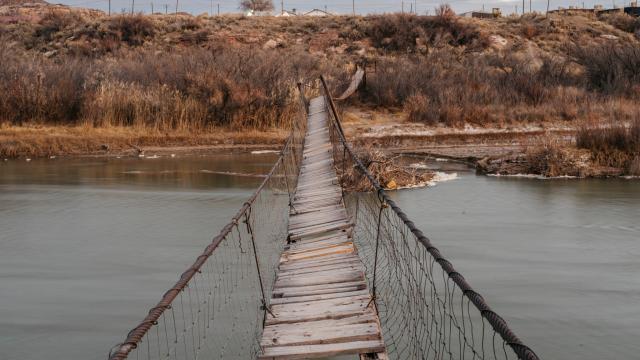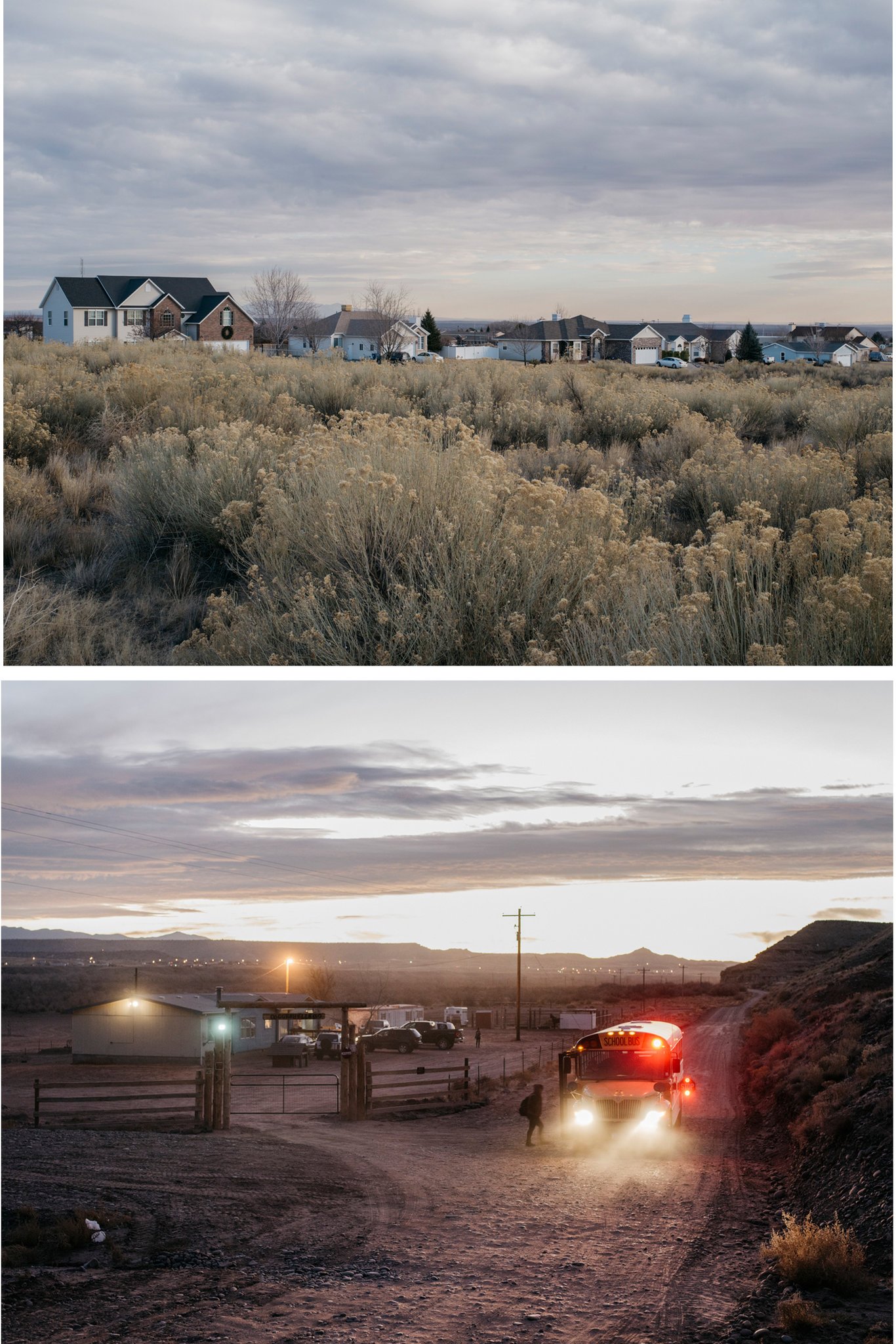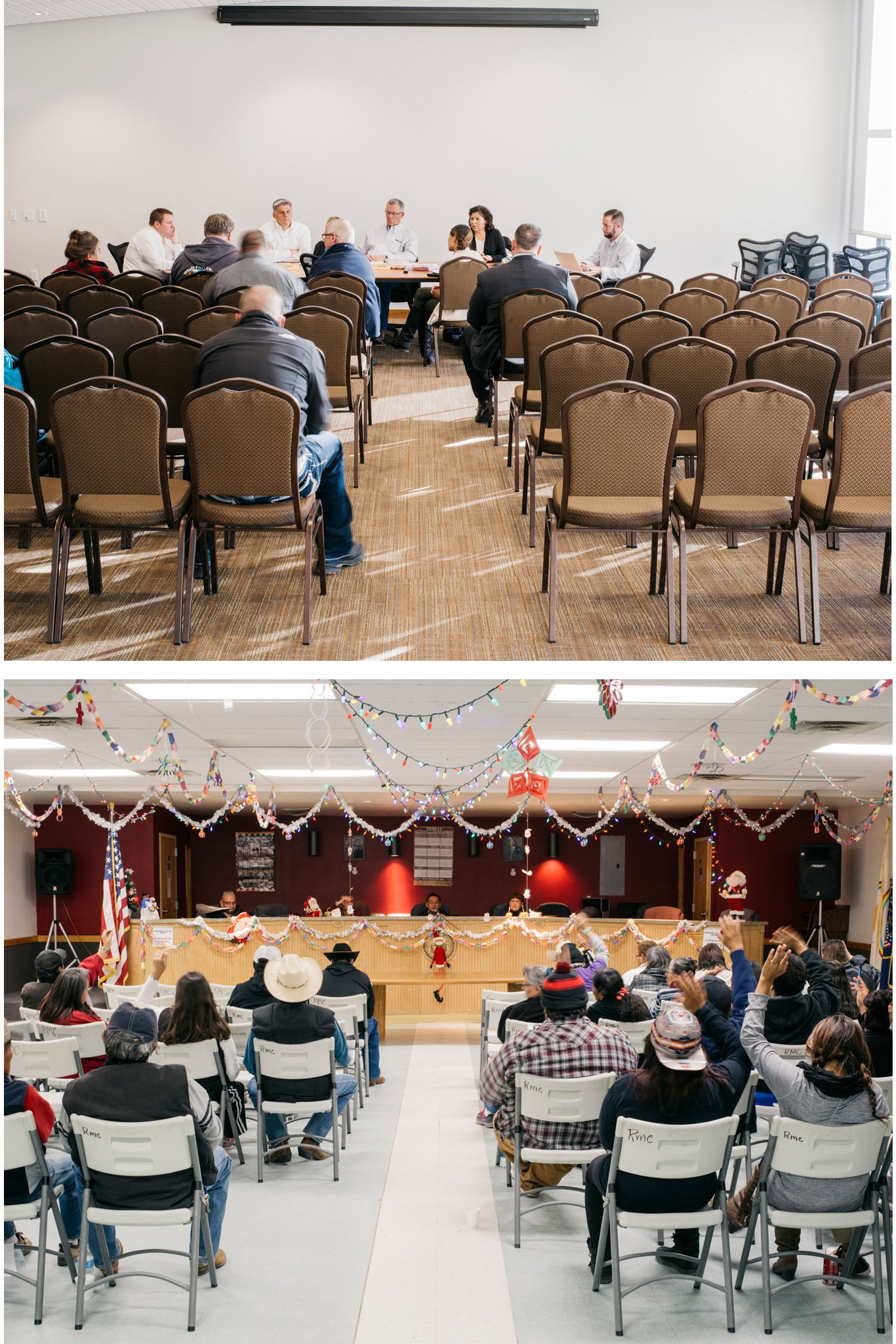
A footbridge in San Juan County, Utah, damaged in spring floods and never fixed. Alicia Coggeshell, 52, who lives in the southern part of the county, said the bridge was so dilapidated that her neighbors sometimes fall into the icy water. “We asked the county and the county says: It’s not our responsibility.” Credit: Benjamin Rasmussen for The New York Times
SAN JUAN COUNTY, Utah — In this county of desert and sagebrush, Wilfred Jones has spent a lifetime angered by what his people are missing. Running water, for one. Electricity, for another. But worst of all, in his view, is that the Navajo people here lack adequate political representation.
So Mr. Jones sued, and in late December, after a federal judge ruled that San Juan County’s longtime practice of packing Navajo voters into one voting district violated the United States Constitution, the county was ordered to draw new district lines for local elections.
The move could allow Navajo people to win two of three county commission seats for the first time, overturning more than a century of political domination by white residents. And the shift here is part of an escalating battle over Native American enfranchisement, one that comes amid a larger wave of voting rights movements spreading across the country.
“It’s a historic moment for us,” said Mr. Jones, during a drive on the county’s roller coaster dirt roads. “We look at what happened with the Deep South,” he went on, “how they accomplished what they have. We can do the same thing.”
The county is challenging the decision, arguing that the maps ordered by Judge Robert J. Shelby unconstitutionally consider race, and so discriminate against white voters.
“In one of the poorest counties in the nation, the last thing we need is to be constantly sued by these predatory attorneys,” said Phil Lyman, a county commissioner. “Outside people try to put this into a racial divide that simply doesn’t exist in San Juan County.”
Fights over indigenous voting rights are playing out in the West and the Midwest, a trend that has the potential to tip tight races in states with large native populations, like Alaska and Arizona, and to influence matters of national importance, like the future of Bears Ears National Monument, a conservation area in this county that is at the center of a fierce debate over public lands.
Today, Native Americans are suing over a new voter identification law in North Dakota, where lawyers say there is not a single driver’s license site on a reservation in a state that requires identification to vote. The outcome of the lawsuit could influence this year’s congressional election, helping to secure or flip the seat of Senator Heidi Heitkamp, a Democrat with wide Native American support.
In the battleground state of Nevada, the Pyramid Lake and Walker River Paiutes won a lawsuit in late 2016 that charged that tribal citizens had to travel as many as 100 miles to vote. The suit forced officials to open new polling stations in tribal areas and spurred nine other tribes to request their own election sites.
And in Alaska, where native people make up a fifth of the population, officials recently rolled out election materials in the Yup’ik, Inupiaq and Gwich’in languages, following federal rulings that found the state had failed to provide materials equivalent to those used by English speakers.
After those changes, turnout in villages rose by as much as 20 percent, increasing the political power of the state’s native residents.
Other native voting cases are proceeding or have been recently settled in Arizona, Montana, South Dakota and Wyoming. And a second case is open in San Juan County, this one challenging the county’s decision to move to an all-mail ballot. Plaintiffs contend this disenfranchises native people who live far from reliable mail service.
“It’s part of a larger political trend of Native Americans organizing and protecting themselves,” said Daniel McCool, a professor emeritus at the University of Utah and a voting rights expert who was hired by the plaintiffs in the Navajo redistricting case.
There are 6.6 million American Indians and Alaska Natives in the United States, representing about 2 percent of the population. But many live in America’s most remote places — amid mountain passes or miles of near-empty plains — and the native path to the ballot box has often been less visible than that of other groups.
It was not until 1924 that Congress granted native people the right to vote, and for generations afterward, local and state governments have blocked them from doing so, often saying that Native Americans living on reservations were not state residents.
The Voting Rights Act of 1965 was a critical moment, prohibiting election practices that discriminate on the basis of race. But relatively few lawsuits were filed on behalf of native voters until the 1990s.
The pace of legal challenges has picked up recently, something observers attribute to a realization that American Indians can influence local and national policy. The fate of Bears Ears, a conservation area that originally occupied a quarter of this 8,000-square-mile county, is one such issue.
When President Trump slashed the size of the monument last month, one argument was that he was considering the desires of local officials. A Navajo-controlled commission, however, could oppose the decision, a move that could influence coming legal battles over the monument’s fate.
San Juan County is a hardscrabble expanse in the state’s southeast corner, and home to some 16,000 people. The county population is about half Native American and half white, and battles over resources have often fallen along racial lines.
The lower portion of the county overlaps the Navajo reservation, and native people bring millions of dollars to the county each year in the form of oil and gas revenue and other taxes. But those living on the reservation do not pay property taxes, frustrating many others who feel they pay more than their fair share.
In the south, where most native families live, the library is in the corner of a trailer, there is no hospital or bank, and residents have spent more than a generation suing the county for services.
Alicia Coggeshell, 52, lives in the south with two children and three grandchildren. She has no running water or internet service, and on a recent morning she traveled to the footbridge she uses to get to the market.
These days, it is so dilapidated that her neighbors sometimes fall into the icy water below, she said.
“We asked the county and the county says, It’s not our responsibility. This is what we mean: forgotten,” she said.
White families live mostly in the north, home to two expansive libraries, a community center on a golf course, a recreation center with a pool, and the seats of local power: the sheriff’s office, the courthouse, the school administration building.
Tauna Larson, a retired educator who lives in the north, said she looked at the possibility of two Navajo commissioners with some trepidation. “I worry that they might tend to look out more for the reservation,” she said. “The majority tends to take care of their own.”
The county also has a contentious relationship with the federal government, which controls 60 percent of the land here and has battled with local leaders over a range of issues, including the protection of Native American artifacts and access to a beloved public canyon.
Commissioner Bruce Adams and Commissioner Lyman have been intensely critical of the federal government, and both said they believed the judge’s decision was a punishment for their resistance.
“I think there is retribution,” Mr. Adams said. “We’re tired of being the scapegoat, saying we’re doing everything wrong, when we try to abide by the law.”
Judge Shelby declined to comment.
The old commission map made Native Americans about 30 percent of the population in two districts, and 93 percent in a third district. The new one makes them 66 percent in one district, 80 percent in another, and 11 percent in another.
It will be used in a 2018 local election.
Mr. Jones, the plaintiff in the case, is 62 and was born before most Native Americans could vote in the state.
On a recent evening he pulled on a black cowboy hat and walked into a tribal meeting to explain the results of the lawsuit to a crowd.
Kenny Victor, 57, sat on a couch in the back, looking a bit tearful. He said he was a Navy veteran and that he welcomed the decision. “I served for the right to vote,” he said. “It’s long overdue. We need representation.”
Top, homes in the northern part of the county; below, Ms. Coggeshell’s granddaughter, Kolela, catches the school bus in the south. The 10-mile trip takes over an hour, in part because of the poor road conditions.CreditBenjamin Rasmussen for The New York Times
Top, San Juan County commissioners at a meeting in the north; below, a Navajo meeting in the south.CreditBenjamin Rasmussen for The New York Times
Top, the San Juan County Wellness Center in the northern part of the county; below, the closed swimming pool in the south. CreditBenjamin Rasmussen for The New York Times
3 WAYS TO SHOW YOUR SUPPORT
- Log in to post comments


















